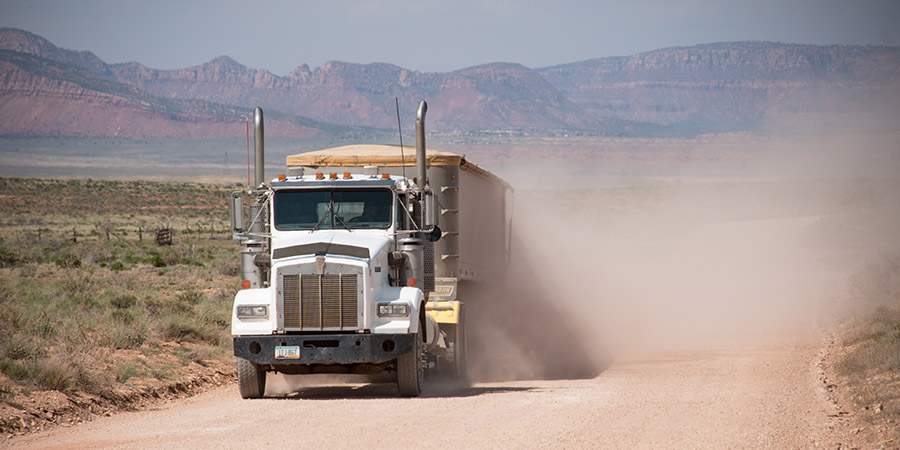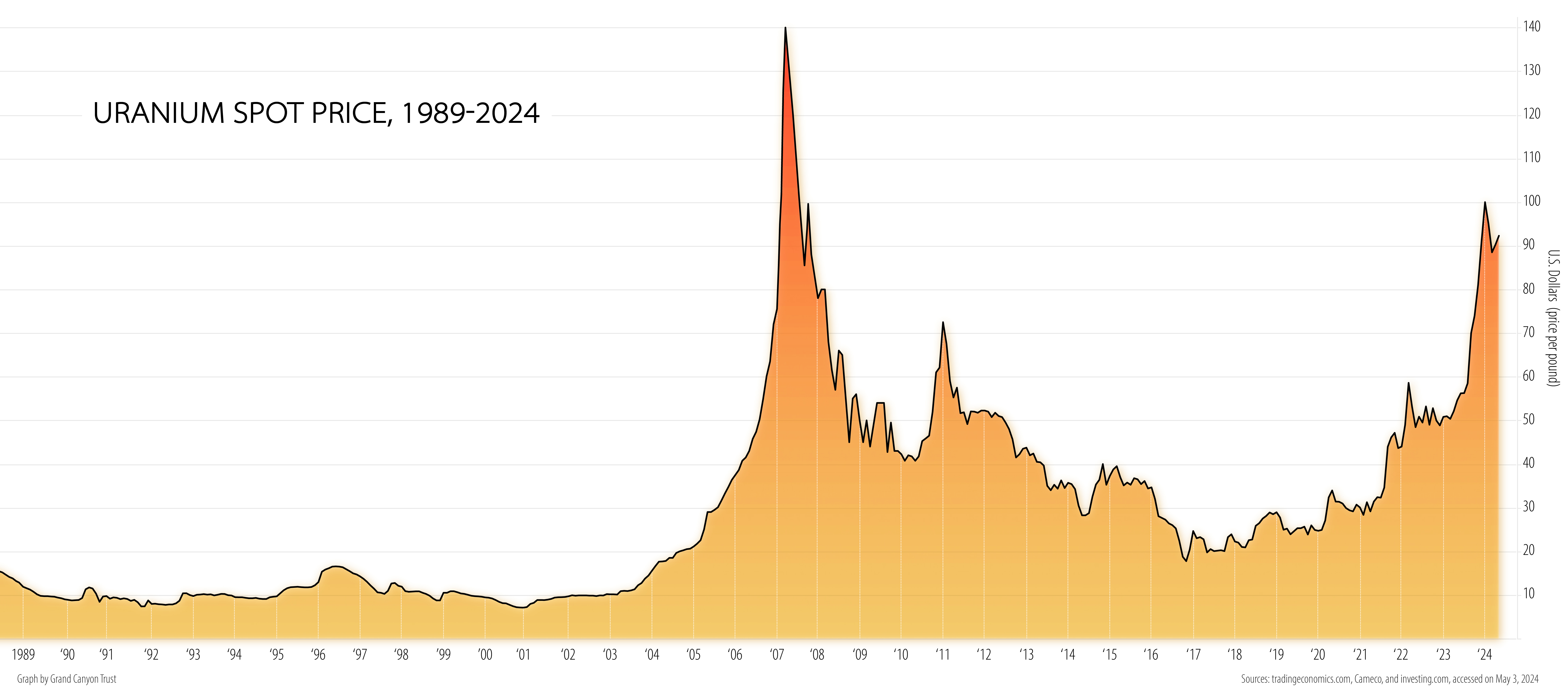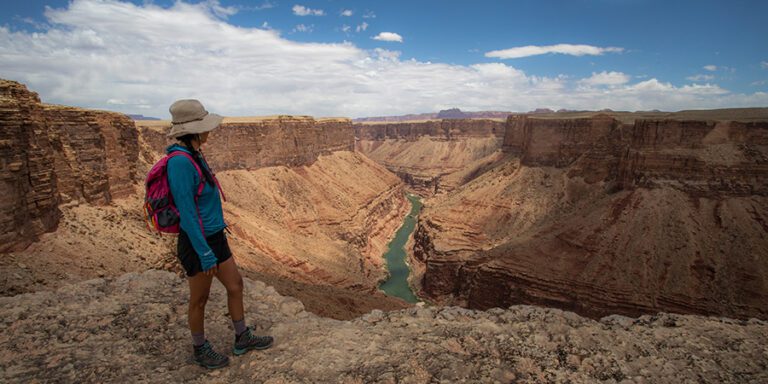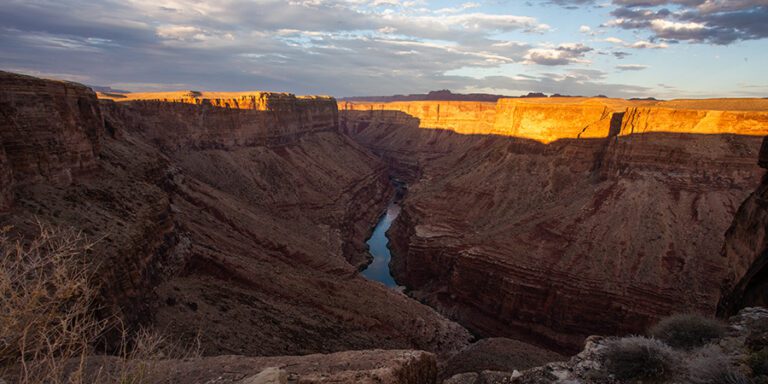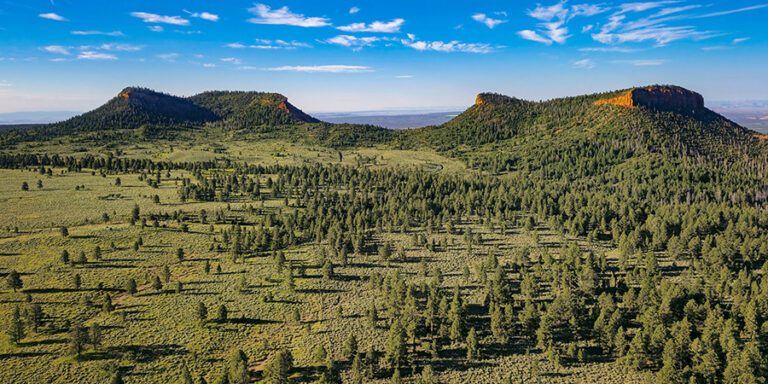
Uranium trucks are passing through Arizona, Utah, and the Navajo Nation despite strong opposition.
If you’re driving to or from the Grand Canyon’s south entrance and you pass a tractor trailer that resembles a dump truck covered in a canvas tarp, it might be worth a closer look.
Canyon Mine, also known as Pinyon Plain Mine, a controversial uranium mine south of Grand Canyon National Park, has started trucking uranium ore along a scenic, popularly traveled highway. The radioactive ore is headed for the White Mesa uranium mill in Utah, a facility which poses its own long list of environmental concerns, particularly for the Ute Mountain Ute community of White Mesa, located next-door.
READ MORE
- The Havasupai Tribe’s statement on the hauling of uranium ore from Pinyon Plain Mine
- The Navajo Nation’s plans to stop uranium transport across Navajo lands
- The temporary pause in uranium hauling announced August 2, 2024
- Arizona Attorney General Kris Mayes questioning whether the mine should have been permitted
Uranium trucks are leaving a mine near the Grand Canyon
About six large uranium haul trucks are expected to make the roughly 300-mile journey across northern Arizona, the Navajo Nation, the Hopi Reservation, the Ute Mountain Ute Reservation, and southern Utah, from the mine to the mill, each day.
Communities along the haul route don’t want the trucks passing through and have expressed concerns about public safety and possible accidents. The Navajo Nation even asked President Biden to intervene to stop the trucks from entering Navajo Nation lands, but Energy Fuels Resources, the company that owns the mine, has ignored the tribe’s opposition and kept on trucking.
Native communities across the Southwest have borne the brunt of uranium mining and processing impacts in the past and continue to bear the impacts of Canyon Mine (Pinyon Plain Mine) from start to finish and all along the haul route.
Where is the uranium coming from? Where is it going?
Canyon Mine, renamed Pinyon Plain Mine, sits near the south rim of the Grand Canyon and inside Baaj Nwaavjo I’tah Kukveni – Ancestral Footprints of the Grand Canyon National Monument, in a meadow below the Havasupai Tribe’s sacred mountain, Red Butte, on the tribe’s ancestral lands.
“The Tribe has been forced to witness the degradation of our aboriginal territory that encompasses the mine site…we will continue to fight against both the mining and transportation of uranium anywhere within our aboriginal territory,” said the Havasupai Tribe in a statement on the hauling.
Energy Fuels Resources, the Colorado-based subsidiary of a Canadian uranium company, owns the mine, and is transporting uranium ore through the city of Flagstaff, across the Navajo Nation (passing through the Navajo communities of Tuba City and Kayenta), and across state lines through Bluff and White Mesa, Utah to the White Mesa Mill, a mile from Bears Ears National Monument.
The Havasupai Tribe has opposed the mine since the 1980s and fears contamination from the mine could migrate downward into the Redwall-Muav Aquifer, which supplies the tribe’s drinking water. The mine has been plagued by flooding problems since miners pierced an aquifer in 2016.
When uranium mining finally began at Canyon Mine (Pinyon Plain Mine) in December 2023, levels of heavy metals in groundwater pumped out of the flooding mine shaft skyrocketed. The mine is “desecrating one of our most sacred sites and jeopardizing the existence of the Havasupai Tribe,” the tribe said in a statement.
“A whole set of unknown and new problems will exist when the company begins transporting uranium over the land,” the Havasupai Tribe has predicted.
Energy Fuels Resources also owns the White Mesa Mill, where the ore from the mine is trucked for processing. The mill is located just up the road from the Ute Mountain Ute Tribe’s White Mesa community. The tribe and the community strongly oppose the mill and are concerned that it threatens air quality, water quality, the environment, and public health.
What happens if there is an accident?
Who will be notified and how, if one of the haul trucks has an accident or spills uranium ore? And who will be responsible for cleaning it up? This would depend on who has jurisdiction in the location where an accident occurs, and could involve state and federal agencies, but many small communities along the haul route don’t have the resources or the training to respond to uranium ore spills.
The uranium industry has a long history of poisoning land, water, and people across the Navajo Nation, where more than 500 abandoned uranium mines await cleanup. The Navajo Nation bans uranium mining and generally opposes and regulates uranium transport on its land, but the state of Arizona allows uranium to be transported on state highways that run through Navajo land.
The city of Flagstaff has long opposed the transport of uranium through the city and across Indigenous lands. As recently as February 2024, the Coconino County Board of Supervisors — the second largest county in the United States by land area — passed a resolution opposing uranium transport through tribal lands and the greater Flagstaff area, citing concerns about hauling “potentially threatening air quality and the health and welfare of those along the travel routes.”
The mine’s owner hasn’t taken kindly to this opposition, demanding that the county retract parts of its resolution.
Why now? 
After nearly four decades of sporadic activity, in December 2023, Canyon Mine started commercially mining uranium for the very first time. Why finally start mining now? Money.
Uranium mining is famously a boom-and-bust industry. Spot prices fluctuated wildly between 1989 and 2024, with notable spikes in 2007 and 2024. By mid-2023, prices were on the rise, topping $100 per pound in January 2024.
The wrong place to mine uranium

BLAKE MCCORD
Corporate profits aside, it doesn’t make sense to put the Grand Canyon at risk by mining uranium here. The Grand Canyon region contains only a tiny fraction of U.S. uranium reserves; mining in the region is simply unnecessary to meet U.S. uranium needs. Moreover, the complex hydrogeology of fractured rock makes it difficult to understand how far, how fast, and what direction water travels and has led some scientists to conclude that mining in the region simply is not worth the risk of contaminating the deep groundwater aquifer that feeds seeps and springs in the Grand Canyon. For reasons best articulated by the Havasupai Tribe, this is the wrong place to mine uranium.

